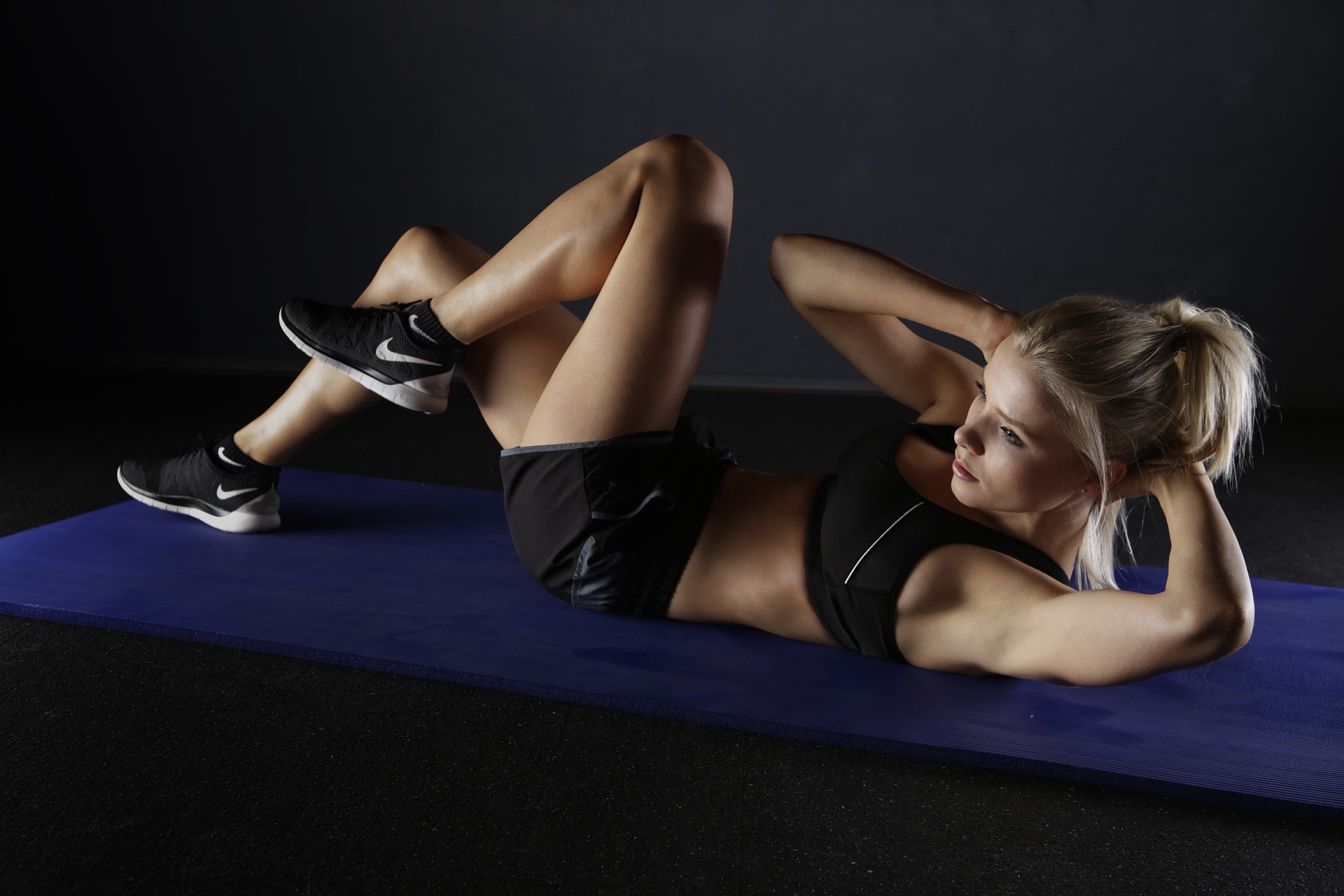Kinetic Chain Training: Revolutionizing Athletic Performance
The human body is an intricate network of interconnected systems, each playing a crucial role in athletic performance. Kinetic chain training, a holistic approach to sports conditioning, taps into this interconnectedness to elevate an athlete's capabilities. By focusing on the body as a unified system rather than isolated parts, this innovative method is reshaping how athletes train, recover, and excel in their respective sports.

The Origins and Evolution of Kinetic Chain Training
The concept of the kinetic chain can be traced back to 1875 when Franz Reuleaux, a mechanical engineer, first introduced it in the context of mechanical systems. However, it wasn’t until the mid-20th century that this idea began to find its way into the realm of human biomechanics and sports science.
Dr. Arthur Steindler, an orthopedic surgeon, was among the first to apply the kinetic chain concept to human movement in the 1950s. He described the human body as a series of overlapping segments connected by joints, emphasizing the importance of understanding how these segments work together during movement.
As sports medicine and biomechanics advanced, researchers and practitioners began to recognize the potential of applying kinetic chain principles to athletic training. The 1980s and 1990s saw a surge in interest, with pioneering work by physical therapists and sports scientists like Gary Gray and Dr. Vladimir Janda contributing to the development of functional training approaches based on kinetic chain principles.
The turn of the millennium marked a significant shift in athletic training paradigms. Traditional methods that focused on isolating muscle groups began to give way to more integrated approaches. Kinetic chain training, with its emphasis on multi-joint movements and full-body coordination, gained traction among forward-thinking coaches and trainers.
Today, kinetic chain training has evolved into a sophisticated methodology, incorporating insights from fields such as neuroscience, motor learning, and biomechanics. Modern practitioners use advanced technologies like motion capture systems and force plates to analyze and optimize kinetic chain function, tailoring training programs to the specific demands of different sports and individual athletes.
Understanding the Kinetic Chain in Human Movement
The kinetic chain in human movement refers to the interconnected system of body segments, joints, and muscles that work together to produce coordinated motion. This chain can be broadly categorized into two types: open and closed kinetic chains.
In an open kinetic chain, the distal segment (such as a hand or foot) is free to move in space. Examples include throwing a ball or kicking in mid-air. Closed kinetic chain movements, on the other hand, occur when the distal segment is fixed or in contact with a surface, such as during a squat or push-up.
Understanding these distinctions is crucial for athletes and trainers, as different sports and movements involve varying combinations of open and closed chain actions. For instance, a sprinter primarily engages in closed chain movements during acceleration, while a tennis player alternates between open and closed chain actions throughout a match.
The kinetic chain operates on several key principles:
-
Sequential activation: Energy is transferred efficiently through the body when segments are activated in the correct sequence.
-
Summation of forces: The combined force generated by multiple segments working together is greater than the sum of individual segment forces.
-
Deceleration to acceleration: Controlled deceleration of one segment can contribute to the acceleration of another, enhancing overall power output.
-
Optimal stability for mobility: Proper stabilization of certain joints allows for greater mobility and force production in others.
-
Interdependence: Weakness or dysfunction in one part of the chain can affect the performance of the entire system.
By focusing on these principles, kinetic chain training aims to optimize the body’s movement efficiency, power output, and injury resistance. This approach recognizes that athletic performance is not merely the sum of individual muscle strengths but rather the result of harmonious interaction between all components of the kinetic chain.
Key Components of Kinetic Chain Training
Kinetic chain training encompasses a multifaceted approach to athletic development, incorporating several key components that work synergistically to enhance overall performance:
-
Functional Movement Patterns: At the core of kinetic chain training are functional movements that mimic real-world athletic actions. These include squatting, lunging, pushing, pulling, rotating, and gait-based exercises. By training these fundamental patterns, athletes develop strength and coordination that directly translates to their sport-specific movements.
-
Multi-Joint Exercises: Unlike traditional isolation exercises, kinetic chain training emphasizes multi-joint movements that engage multiple muscle groups simultaneously. Exercises like deadlifts, Turkish get-ups, and kettlebell swings challenge the body to work as an integrated unit, improving overall strength and movement efficiency.
-
Proprioception and Balance Training: Enhancing an athlete’s ability to sense their body’s position in space is crucial for optimal kinetic chain function. Balance exercises, unstable surface training, and plyometrics are incorporated to improve proprioception and neuromuscular control.
-
Core Stability: The core serves as the central link in the kinetic chain, transferring force between the upper and lower body. Kinetic chain training places a strong emphasis on developing core stability through exercises like planks, anti-rotation movements, and dynamic stabilization drills.
-
Mobility and Flexibility Work: Optimal range of motion in all joints is essential for efficient kinetic chain function. Dynamic stretching, mobility drills, and self-myofascial release techniques are used to address restrictions and imbalances that could disrupt the kinetic chain.
-
Speed and Power Development: Explosive movements that challenge the entire kinetic chain are crucial for many sports. Olympic lifts, medicine ball throws, and plyometric exercises are employed to develop power output and rapid force production.
-
Sport-Specific Movement Integration: While general kinetic chain principles apply across sports, training programs are tailored to the specific demands of each discipline. For example, a baseball pitcher’s program might focus on rotational power and shoulder stability, while a soccer player’s regimen emphasizes lower body plyometrics and multidirectional agility.
-
Recovery and Regeneration: Recognizing the interconnectedness of the kinetic chain extends to recovery practices. Techniques such as foam rolling, active recovery sessions, and targeted mobility work are used to address fatigue and maintain optimal chain function between training sessions.
-
Neuromuscular Training: Improving the communication between the nervous system and muscles is crucial for kinetic chain optimization. Reactive neuromuscular training techniques, such as perturbation training and visual feedback drills, are incorporated to enhance movement quality and efficiency.
-
Periodization and Progressive Overload: Kinetic chain training programs are structured to progressively challenge the athlete’s entire system. Periodization strategies ensure that different aspects of the kinetic chain are developed in a balanced manner over time, leading to peak performance when it matters most.
By integrating these components, kinetic chain training provides a comprehensive approach to athletic development that goes beyond traditional strength and conditioning methods. This holistic strategy not only enhances performance but also promotes long-term athletic health and longevity.
Benefits and Applications in Various Sports
The adoption of kinetic chain training has yielded significant benefits across a wide spectrum of sports, revolutionizing how athletes prepare for competition and maintain peak performance. Its versatility and focus on functional movement patterns make it applicable to virtually every athletic discipline.
In team sports like soccer and basketball, kinetic chain training has proven invaluable for improving overall athleticism. Players develop better coordination between upper and lower body movements, leading to more explosive changes of direction, higher jumps, and more powerful throws or kicks. The emphasis on core stability and rotational strength particularly benefits actions like shooting, passing, and tackling.
For individual sports such as tennis and golf, kinetic chain training has transformed how athletes approach their swing mechanics. By focusing on the sequential activation of body segments, players can generate more power with less effort, reducing the risk of overuse injuries. The improved proprioception and balance also contribute to better shot accuracy and consistency.
In combat sports and martial arts, the benefits of kinetic chain training are particularly pronounced. Fighters develop a more integrated approach to generating force, allowing for more powerful strikes and more efficient movement patterns. The emphasis on core stability and rotational strength enhances both offensive and defensive capabilities.
Endurance athletes, such as runners and cyclists, benefit from improved movement efficiency and reduced risk of overuse injuries. Kinetic chain training helps address muscle imbalances and weaknesses that can lead to compensatory patterns over long distances. This results in better running economy, more powerful pedal strokes, and enhanced overall performance.
For strength and power athletes in sports like weightlifting and track and field events, kinetic chain training complements traditional strength work by improving force transfer through the body. This leads to better technique in complex movements like the snatch or javelin throw, as well as increased power output in explosive events.
Some specific benefits observed across various sports include:
-
Enhanced Power Output: Athletes report significant increases in their ability to generate force quickly, translating to faster sprints, higher jumps, and more powerful throws or strikes.
-
Improved Movement Efficiency: By optimizing the kinetic chain, athletes move more fluidly and with less wasted energy, leading to better endurance and performance over time.
-
Reduced Injury Risk: The focus on balanced, functional strength development and proper movement patterns has been shown to lower the incidence of both acute and overuse injuries.
-
Better Body Awareness: Athletes develop a heightened sense of proprioception, allowing for more precise control of their movements and quicker reactions to changing situations.
-
Faster Recovery: The holistic approach to training and recovery helps athletes bounce back more quickly between training sessions and competitions.
-
Improved Sport-Specific Skills: By training movement patterns that closely mimic sport-specific actions, athletes see direct improvements in their technical skills.
-
Mental Edge: The comprehensive nature of kinetic chain training often leads to increased confidence and mental resilience, as athletes feel more prepared for the physical demands of their sport.
The applications of kinetic chain training extend beyond traditional sports as well. In rehabilitation settings, physical therapists use kinetic chain principles to help patients regain functional movement after injuries. Occupational health professionals apply these concepts to improve ergonomics and reduce workplace injuries.
As research continues to validate the effectiveness of kinetic chain training, its principles are being incorporated into physical education curricula, helping to develop more well-rounded young athletes and promoting lifelong physical literacy.
Implementing Kinetic Chain Training: Strategies and Considerations
Implementing an effective kinetic chain training program requires careful planning and a thorough understanding of both the athlete’s needs and the sport’s demands. Here are key strategies and considerations for coaches, trainers, and athletes looking to incorporate this approach:
-
Comprehensive Assessment: Begin with a thorough evaluation of the athlete’s current kinetic chain function. This should include:
-
Movement screening tests like the Functional Movement Screen (FMS) or Y-Balance Test
-
Sport-specific performance assessments
-
Analysis of posture and alignment
-
Evaluation of flexibility and joint range of motion
-
Assessment of core stability and strength
-
-
Identify Weak Links: Based on the assessment, identify areas of weakness or dysfunction in the kinetic chain. These could be mobility restrictions, strength imbalances, or poor movement patterns that need to be addressed.
-
Establish a Foundation: Start with fundamental exercises that focus on proper movement patterns and core stability. This may include:
-
Basic bodyweight exercises like squats, lunges, and push-ups
-
Planks and other core stabilization exercises
-
Single-leg balance and proprioception drills
-
-
Progressive Overload: Gradually increase the complexity and intensity of exercises as the athlete’s kinetic chain function improves. This might involve:
-
Adding external resistance to basic movement patterns
-
Incorporating more dynamic and explosive movements
-
Introducing sport-specific challenges and scenarios
-
-
Integrate Sport-Specific Movements: As the athlete progresses, incorporate exercises that closely mimic the demands of their sport. For example:
-
A baseball pitcher might focus on rotational power exercises and shoulder stability drills
-
A soccer player could emphasize multidirectional agility and lower body plyometrics
-
A swimmer might incorporate exercises that target the entire posterior chain
-
-
Balance Stability and Mobility: Ensure that the program addresses both stability and mobility needs. Stable joints provide a foundation for mobile joints to function optimally.
-
Emphasize Quality Over Quantity: Focus on perfect execution of movements rather than high repetitions or heavy loads, especially in the early stages of training.
-
Utilize Various Training Tools: Incorporate a range of equipment to challenge the kinetic chain in different ways:
-
Resistance bands for variable resistance training
-
Stability balls and BOSU balls for proprioception work
-
Kettlebells and medicine balls for functional strength and power development
-
TRX or suspension trainers for bodyweight exercises with increased instability
-
-
Implement Periodization: Structure the training program to cycle through different emphasis areas, ensuring balanced development of all kinetic chain components over time.
-
Monitor and Adjust: Regularly reassess the athlete’s progress and be prepared to modify the program based on their response and any changes in their sport’s demands.
-
Address Recovery and Regeneration: Include strategies for maintaining optimal kinetic chain function between training sessions, such as:
-
Self-myofascial release techniques
-
Active recovery sessions
-
Targeted mobility work
-
Proper nutrition and hydration protocols
-
-
Educate the Athlete: Help athletes understand the principles behind kinetic chain training and how it relates to their sport. This can improve compliance and motivation.
-
Collaborate with Other Professionals: Work with physiotherapists, sports medicine doctors, and other specialists to ensure a comprehensive approach to the athlete’s development.
-
Use Technology Wisely: While not essential, technology can enhance kinetic chain training:
-
Motion capture systems for detailed movement analysis
-
Force plates to measure ground reaction forces
-
EMG sensors to assess muscle activation patterns
-
-
Focus on Transfer to Performance: Always keep the end goal in mind—improved athletic performance. Regularly assess how well the training transfers to actual sport performance.
Implementing kinetic chain training requires patience and a long-term perspective. It’s not about quick fixes but about building a solid foundation for sustained athletic performance and injury prevention. By following these strategies and remaining adaptable, coaches and athletes can harness the full potential of kinetic chain training to achieve remarkable improvements in athletic capability.
Challenges and Future Directions in Kinetic Chain Training
While kinetic chain training has proven to be a highly effective approach to athletic development, it is not without its challenges. As the field continues to evolve, researchers and practitioners are working to address these issues and push the boundaries of what’s possible in sports performance.
One of the primary challenges in implementing kinetic chain training is the complexity of assessing and addressing individual variations in biomechanics. Each athlete’s body is unique, with its own set of strengths, weaknesses, and movement patterns. Developing standardized protocols that can be easily adapted to these individual differences remains an ongoing challenge.
Another hurdle is the need for more comprehensive education among coaches and trainers. The principles of kinetic chain training can be complex, requiring a deep understanding of biomechanics, physiology, and sport-specific demands. Bridging the gap between scientific research and practical application is crucial for widespread adoption of these methods.
The integration of kinetic chain training with traditional strength and conditioning programs can also be challenging. Many athletes and coaches are accustomed to more conventional training methods, and there may be resistance to changing established routines. Finding the right balance and demonstrating the added value of kinetic chain principles is essential for overcoming this obstacle.
Looking to the future, several exciting directions are emerging in the field of kinetic chain training:
-
Advanced Biomechanical Analysis: As technology continues to advance, more sophisticated tools for analyzing the kinetic chain are becoming available. High-speed motion capture systems, wearable sensors, and artificial intelligence-driven analysis promise to provide unprecedented insights into movement patterns and kinetic chain function.
-
Personalized Training Algorithms: Machine learning and big data analytics are being applied to develop highly personalized training programs that adapt in real-time to an athlete’s progress and changing needs.
-
Virtual and Augmented Reality Training: These technologies offer new possibilities for kinetic chain training, allowing athletes to practice complex movement patterns in simulated environments with instant feedback.
-
Genetic and Epigenetic Considerations: Emerging research is exploring how an individual’s genetic makeup and epigenetic factors influence kinetic chain function, potentially leading to more tailored training approaches.
-
Integration with Regenerative Medicine: As our understanding of tissue healing and regeneration improves, kinetic chain training may be more closely integrated with cutting-edge medical treatments to enhance recovery and performance.
-
Neurocognitive Training: The role of the brain in movement control is becoming increasingly recognized. Future kinetic chain training may incorporate more elements of cognitive training to enhance movement efficiency and decision-making.
-
Environmental Adaptation: Research into how different environmental conditions affect the kinetic chain could lead to more sophisticated training protocols for athletes competing in varied settings.
-
Longevity and Health Span: The principles of kinetic chain training are being explored not just for peak athletic performance, but also for maintaining functional movement and health throughout the lifespan.
-
Cross-Disciplinary Integration: Increased collaboration between sports scientists, biomechanists, physiotherapists, and other specialists is likely to yield new insights and approaches to kinetic chain optimization.
-
Ecological Dynamics: This emerging framework, which considers the athlete’s interaction with their environment, may lead to new perspectives on how to train the kinetic chain in context-specific ways.
As these areas develop, kinetic chain training is poised to become even more sophisticated and effective. The challenge for the sports science community will be to translate these advancements into





